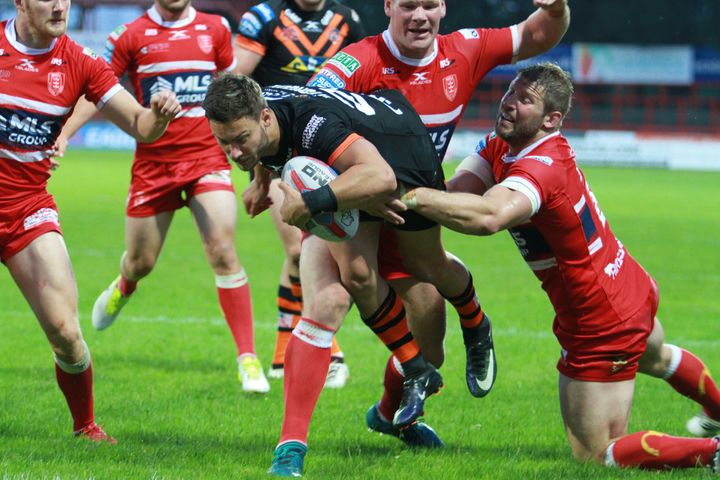
As a sport, rugby league has always been fighting against the odds. Years of disregard and discrimination mean that it is a minor miracle that the game is still in existence. However, it is not saying anything controversial to point out that game is currently struggling on different levels and perhaps needs to evolve in order to preserve its exceptional heritage whilst ensuring long term survival. A blog post is not going to cover everything that can be done but it is the sheer intensity of the game that needs to be looked at.
Many of the issues that contribute to the current struggle have been discussed on these pages before. The behemoth of football on its doorstep, its lack of an international game and limited financial support are among the many reasons that prevent the game from moving in a more affluent direction. Rugby Union is only a threat in the sense that it can entice some of the top players away, similarly to the Australian NRL. Football’s threat is much more latent and comes down to young people potentially choosing the more financially rewarding game and, more significantly, the safer game to play. Whilst 0.0001% players will make it to the top of football’s ladder, the aspirations to get there will be fueled by blanket media coverage of both the game and the lifestyles of the stars. Rugby league players are, to my knowledge, not on £250,000 a week! In this day and age, young players who display talent in football can be prevented from playing other sports to ensure they do not suffer injury that can affect their footballing progress even if they show ability in other sports in addition. There lies another story but the talent pool can be reduced if football takes this position.
Rugby league has always been a “hard” game and, in certain respects, the game may be less dangerous than it had been in the past. However, greater scrutiny on safety in sport as a whole has put contact sports on notice and rugby league is no exception. Here lies a fundamental issue that is potentially making the sport too one dimensional. Examine a typical, top flight rugby league player of today it is hard not to be impressed. Seventeen stone of muscle, averaging over 6ft does tend to look good. But where is the little guy from the past? That clever, intuitive half back who managed the game like a conductor of a symphony orchestra. That player of all round skill who knew when to kick, when to pass and when to run. Players like Rob Burrow who was arguably the last of this kind of player that made rugby league so distinct. The tendency now is for crash, bash, wallop, high crossfield kick, score trya and/or win a penalty. Whilst being effective, one could argue that it is too one dimensional and is reliant on players being bigger and stronger than ever, thus making greater yardage.
The impacts will be getting stronger and stronger and the chance for significant head and neck injury will be increasing. Couple that with a clamp down on tackles that put the heads and necks of players at risk. Some of these tackles would, in the past, have been considered perfectly legal. The recent game between Leeds and Leigh was heavily influenced by the decision to dismiss a Leigh player in the early stages of the game. Such a decision is not reached lightly but the referee was absolutely correct in punishing a tackle that could have had significant long term consequences. The “spoiling of the game” I am afraid does not come into it but everyone then goes home bemoaning the referee.
Change will be difficult as it could be argued that the game has gone too far down this line to change. Rule changes to protect players were necessary but have put extra scrutiny on the referees and there are those online who blame referees for all the problems that the game has. This is manifestly unfair and it is worth noting that the Australian NRL also has considerable issues with officiating despite its advantages in terms of strength in depth and financial support. The first task of the referee is to protect the players and if that means punishing actions severely then so be it. . The notion that a punch up was part of the game needs to change. Impacts in the game are hard enough without foul play
Contact sport as a whole has to be seen to be taking action and the way rugby league has gone, it could be argued, has taken the game to a situation when the bigger and stronger the players, the more likely a team is to win. The game has always been tough and there will be many that bemoan a perceived softness in today’s society but sport to survive has got to attract players and spectators and there will be those who are put off playing in particular by the consequences of trauma. Such trauma would not be present if they turned their hands to other sports.
Rugby league is tradition and heritage and it would be a sad day if the game ever became lost. Young players today may be drawn away from that heritage by the wealth of football but also the prospect of significant long term injury. Maybe I am just a big softie, but you have been warned.
